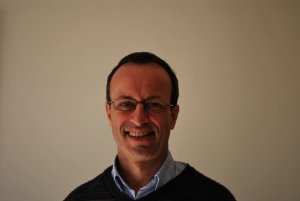May 18 2010
Professor Steve Bramwell of the London Centre for Nanotechnology has won the 2010 Holweck Medal and Prize, one of the most prestigious awards in European Physics. The Holweck prize is awarded jointly by the French and British Physical Societies.
Previous winners include five Nobel Laureates - Louis Néel, Alfred Kastler, Pierre-Gilles de Gennes, Dennis Gabor and Brian David Josephson.

The prize recognises Professor Bramwell's groundbreaking work in magnetism, and particularly his work on "spin ice", leading to his discovery of magnetic monopoles and "magnetricity" - the magnetic equivalent of electricity.
Bramwell co-discovered spin ice in 1997 and elucidated its properties over the following years. Spin ice is a hard transparent magnetic material, named after its relation to water ice. In water ice, H2O, the hydrogen (H) atoms form complex arrangements that persist down to the lowest temperatures. Spin ice contains magnetic atoms whose magnetic moments or "spins" form arrangements analogous to those of the hydrogen atoms in water ice.
Bramwell's work on spin ice reached its climax in October 2009, when he published papers in the journals Nature and Science on consecutive days. These papers proved the existence of "magnetic monopoles" in spin ice - atom size packets of magnetic charge that are free to roam the spin ice crystal. These are analogous to mobile electric charges in water. Bramwell and his collaborators measured the charge and current of magnetic monopoles in spin ice, and thus established the magnetic equivalent of electricity.
The discovery of magnetricity sparked huge public interest and was at one point the most read news story on the BBC website. It paved the way for potential new technology based on magnetic currents.
Bramwell says "It is an great honour to be awarded the Holweck Prize. It has taken me, my collaborators and students many years of hard but fascinating work to reveal the extraordinary properties of spin ice. This is a recognition of our efforts."